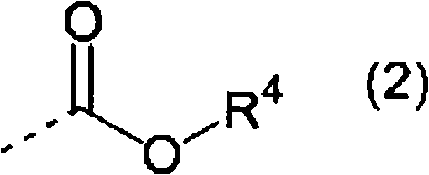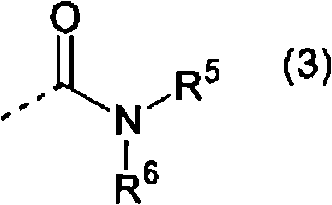Prophylactic or therapeutic agent for optic nerve disorders comprising 4,6-dichloro-1h-indole-2-carboxylic acid derivative or salt thereof as active ingredient
A technology for optic nerve damage and active ingredients, applied in medical preparations containing active ingredients, organic active ingredients, organic chemistry, etc., can solve problems such as the prevention or treatment of optic nerve damage without clear and specific records
- Summary
- Abstract
- Description
- Claims
- Application Information
AI Technical Summary
Problems solved by technology
Method used
Image
Examples
Embodiment 1
[0093] 1. Experiment using NMDA-induced retinal damage model in rats
[0094] (Evaluation of retinal sections by oral administration of test compound)
[0095] The usefulness (retinal nerve cell death inhibitory effect) of the present compound was evaluated using an NMDA-induced rat retinal injury model (Invest.
[0096] (Preparation method of NMDA induced rat retinal damage model)
[0097] Vaporize 3-4% (V / V) isoflurane, make the rat [Slc: SD, male, about 7 weeks old] inhale the vaporized gas at 1-1.5L air / min, and perform general anesthesia , maintain anesthesia under the conditions of 2-3% (V / V) isoflurane. Thereafter, NMDA (manufactured by Sigma, [product number: M3262]) was dissolved in phosphate buffer solution (hereinafter also referred to as "PBS") to 2 mmol / L, and 5 μL (10 nmol as NMDA) of the resulting solution was dissolved in Administered in the vitreous.
[0098] (Preparation and evaluation method of retinal slices)
[0099] For rats after intravitreal admini...
Embodiment 2
[0125] 2. Experiments using NMDA-induced retinal damage model in rats
[0126] (Quantitative polymerase chain reaction (hereinafter also referred to as "PCR") evaluation after intravitreal administration of test compound)
[0127] (evaluation method of quantitative PCR)
[0128] In the NMDA-induced retinal damage model in rats, the expression level of neurofilament light chain (hereinafter also referred to as "NFL"), which is a major component of optic nerve axons and is important for maintaining the shape of axons, in retinal tissues was used as an index , to evaluate the effectiveness of the test compound.
[0129] (Evaluation method)
[0130]One day after the intravitreal administration of NMDA, 100 mg / kg of pentobarbital sodium injection was intraperitoneally administered to the rats. After general anesthesia, the eyeballs were enucleated and the retina was separated. Homogenize the isolated retina, extract total RNA using QIAzol Lysis Reagent (manufactured by QIAGEN [p...
Embodiment 3
[0156] 1) Tablets (in 150mg)
[0157]
[0158]
[0159] The tablet of the above prescription is coated with 3 mg of a coating agent (for example, coating agents such as hydroxypropylmethylcellulose, polyethylene glycol, talc, titanium oxide, and silicone resin), and the target tablet can be obtained . In addition, desired tablets can also be obtained by appropriately changing the types and / or amounts of the present compound and additives.
PUM
 Login to View More
Login to View More Abstract
Description
Claims
Application Information
 Login to View More
Login to View More - R&D
- Intellectual Property
- Life Sciences
- Materials
- Tech Scout
- Unparalleled Data Quality
- Higher Quality Content
- 60% Fewer Hallucinations
Browse by: Latest US Patents, China's latest patents, Technical Efficacy Thesaurus, Application Domain, Technology Topic, Popular Technical Reports.
© 2025 PatSnap. All rights reserved.Legal|Privacy policy|Modern Slavery Act Transparency Statement|Sitemap|About US| Contact US: help@patsnap.com



